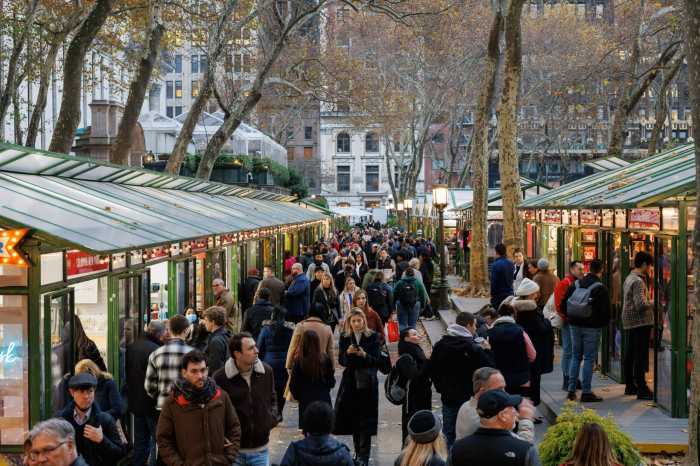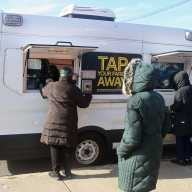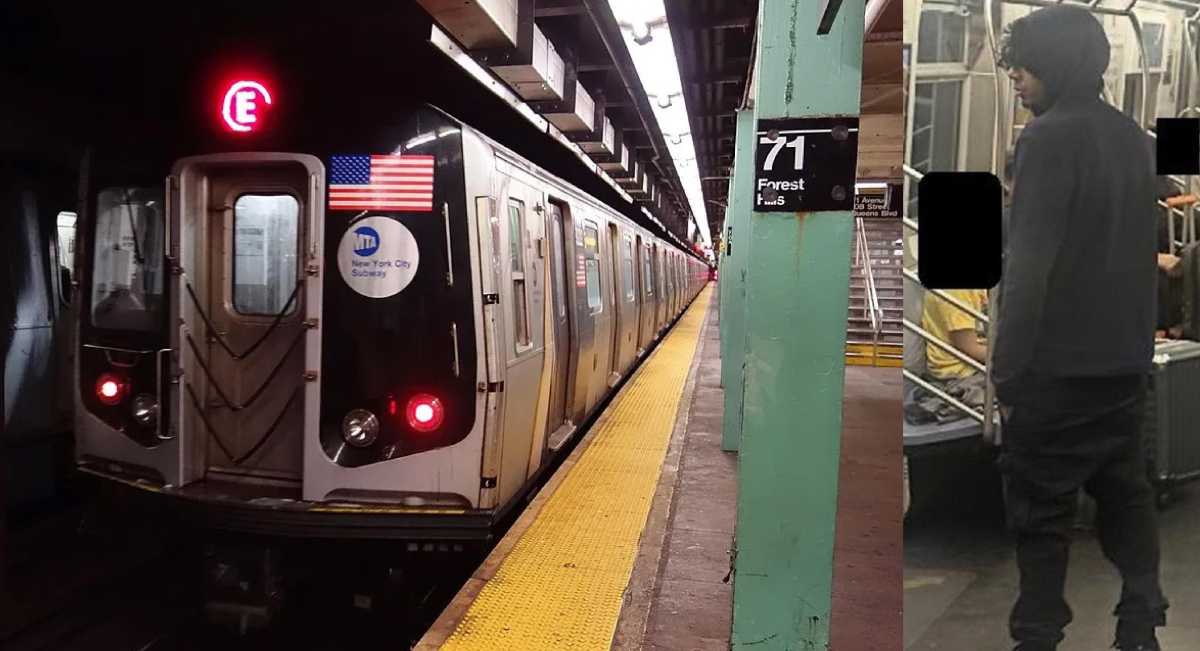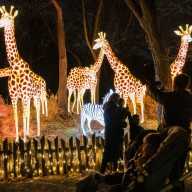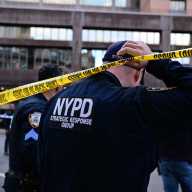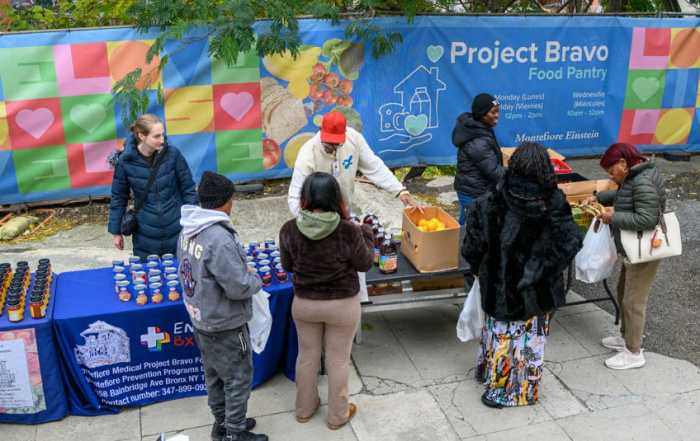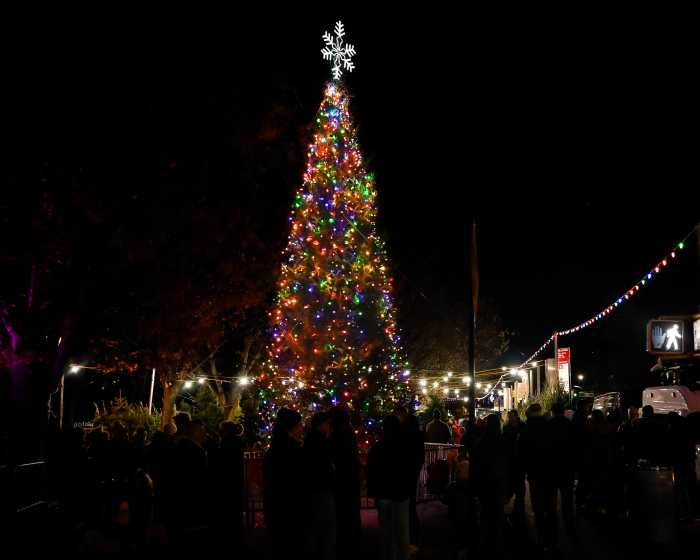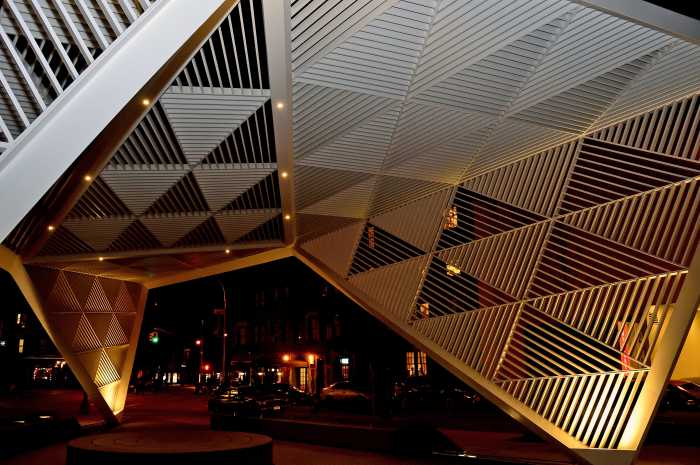
Some New Yorkers have taken a buzz saw to the time-honored tradition of erecting a fresh-cut, balsamy smelling Christmas tree.
In a city where one-third of households contain only one person, many individuals no more see the point of purchasing and decorating a tree than in dining alone by candlelight in a tuxedo. Too, we are a city bursting with creative secular people who question and jettison all manner of rituals and traditions.
And lots of cramped apartments can no more accommodate a tree than they can a helicopter — even if their residents had the time to buy, erect and decorate a conifer.
A Christmas tree “is not something I’ve brought into my culture as an adult,” said Martyne Aime, a thirty-something adjunct professor of political science who lives in Chelsea.
Aime describes herself as “philosophical and spiritual” — an orientation at odds, she said, with purchasing, erecting, decorating and then disposing of, a dead tree.
Maria Hernandez Campbell, 64, from Woodside said she strings lights on a fake house plant in lieu of tree decorating. “There’s no need to put trees up!” as her children are grown and gone, Campbell said.
As a child, Elly McGuire, 60, was disturbed watching the ritual slaughter of trees. “It was horrible!” said the Upper West Side children’s book author. “You go outside after Christmas and it looks like a battlefield of broken spirits,” McGuire said.
It’s tough to get an accurate sense of whether the fresh tree tradition is on the wane in NYC from how many are hauled away, a sanitation department spokeswoman explained, because the length of time devoted to tree collecting and collection conditions changes every year.
Sanitation gathered 200,129 trees over 18 days (a collection period extended due to snow) earlier this year for its annual “mulchfest.” That’s fewer than the 239,658 trees picked up in 1999 over 12 days and 248,652 trees collected in 2000 over 19 days (a year in which collections were also extended due to snow). But it’s more than the 193,393 trees retrieved from city sidewalks in 2013 following Christmas 2012, although that collection period was only 15 days long.
Many believe that buying a dead tree only to throw it out after a week or three is not ecologically “correct,” acknowledged Amitai Etzioni, a sociologist who has researched holiday rituals.
Christmas trees, “are a pagan idea to begin with; it is not what Jesus would do,” and people are “time starved and have no time to decorate them,” Etzioni said.
American families increasingly include members from different religious backgrounds, who may “find these trees alien.” And as Aime demonstrated, “more and more Americans seek their own expressions of their religiosity rather than drawing on conventional expressions,” the George Washington University professor said. Others pass on purchasing because “the trees smack of consumerism and are hard to dispose of,” Etzioni added.
The needles that tempt pets into all kinds of messy mischief also needle their owners. Last year Vogue editor Anna Wintour was called out on social media by her adult daughter, Bee Shaffer, who wrote on Instagram, “My mom threw out our tree before Christmas Day because ‘it was too messy.'” Shaffer’s quip appeared under a picture of a tree-free pile of presents.
Last year, 14.7 million fake trees and 33.02 million real trees were sold in the U.S., and the mean average price paid for a fresh one was $35.30, according to the National Christmas Tree Association, which was unable to provide localized data.
Trees, like everything else in NYC, typically cost more here. At 50th St. and Eighth Avenue recently trees went for $25 a foot — and ranged as high as 12 feet. “Some people don’t like the prices,” acknowledged Evergreen Christmas trees salesman Kenny Martinez. “Every season is different,” in terms of sales, but New Yorkers “don’t like the width” of voluptuous tannenbaums prized by other Americans, preferring skinnier plants, Martinez said.
Martinez insists that “the trees sell themselves!” but according to Holly Johnson, founder and frugality expert at ClubThrifty.com, the no-Christmas tree movement is growing.
“People are struggling! The economy sucks and budgets are being cut: It makes sense to cut back,” on all extraneous holiday spending and celebrate in a way that is both conscientious and cost-conscious, said Johnson. Johnson, who has two kids, annually resurrects a fake tree she bought years ago for $20 at a garage sale. “I would never buy an artificial tree new,” but her tag sale find “was cheap — and I don’t have to feel any guilt about who made it or what I’m supporting,” explained the Noblesville, Indiana mom.
Some New Yorkers indulge their minimalist spirits by draping tinsel and worry beads on rubber plants, or hanging bee lights on curtain rods and cactuses. McGuire prefers battery operated candles for festive twinkling in the small apartment she shares with a partner and two dogs.
And there’s little reason to put up your own tree when there are so many public ones, other New Yorkers point out. “We celebrate the holidays at work,” where a tree is typically erected at the group homes housing the developmentally disabled adults Joan Eilam, 57, works with as a habilitation specialist, she said.
The East Village resident works two jobs, waking at 5 a.m. and knocking off after 10 p.m. When her kids were little, she went to the trouble, but now her relatives live far away and Eilam uses the holidays to cram in extra shifts. Trees are the last thing on her mind.
At Christmastime, “basically, I just work. I try and make that money,” she said.




